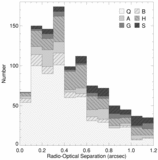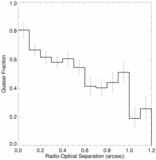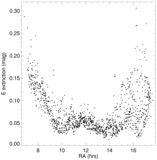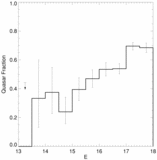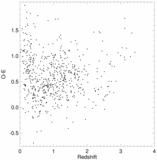Image Details
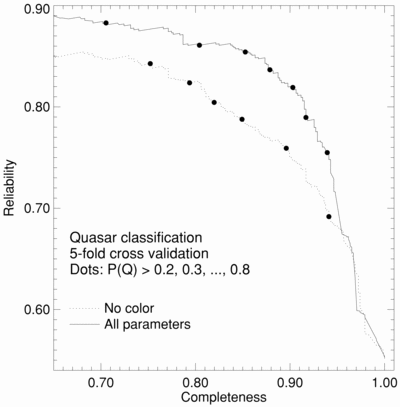
Caption: Fig. 11.
Completeness, C, and reliability, R, of the sample as a function of the threshold selected for the probability ﹩P( Q) ﹩. The completeness is the fraction of quasars from the complete FBQS sample that are included at the selected ﹩P( Q) ﹩ threshold; the reliability is the fraction of selected candidates that are quasars. The solid line is computed using all parameters; the dashed line excludes color. The FBQS sample presented in this paper is the point at ﹩C=1﹩, ﹩R=0.55﹩ (i.e., the sample is complete but only 55% of the candidates turn out to be quasars.) The efficiency of the quasar search (determined by the reliability of the prediction) can be increased to ~89% using color (85% without color), if completeness is not important. Even with completeness greater than 90%, the reliability can be higher than 80%.
Copyright and Terms & Conditions
© 2000. The American Astronomical Society. All rights reserved. Printed in U.S.A.



